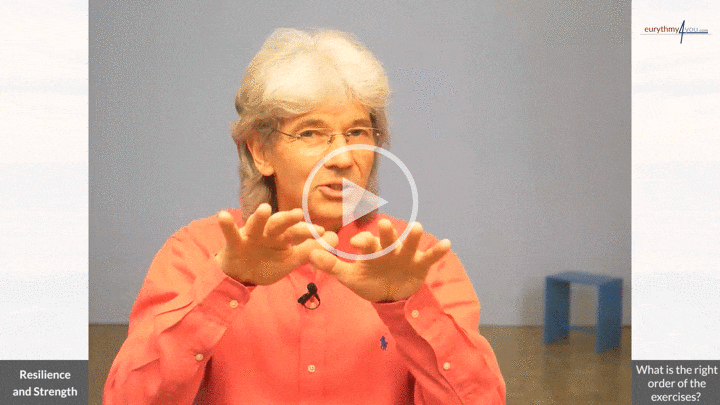Current Lesson
Course Content
Course Content
-
0 / 4
Introductory Texts
-
0 / 14
Questions and Practice Tips
-
Composition of the exercises1:49

-
Order of the exercises1:23

-
What is the right order of the exercises?2:26

-
How often shall I practice?2:56

-
Three types of pauses3:20

-
The rhythmic system1:49

-
Why do I have to feel my muscles?3:10

-
Does yawning distract from the exercise?1:24

-
Is starting physically ok?2:11

-
How to practice in front of your computer?1:16

-
Does Theodor move and speak too slowly?2:26

-
Should the feet be together? Can we practice outside?1:54

-
Closed or open eyes?2:31

-
Can an exercise create anxiety in one’s chest?3:06

-
-
0 / 7
Yes and No
-
Where does Yes and No originate?0:55

-
Why do I return in a straight line?2:02

-
When do I inhale and exhale?1:43

-
Does my weight rest on both feet equally?1:23

-
Do the feet touch the floor?1:43

-
Do I speak the words Yes and No?1:18

-
Can the legs be changed?1:40

-
-
0 / 11
Sympathy and Antipathy
-
What this exercise is about2:04

-
Why the left leg is the supporting one2:03

-
Where do I put the chair? What are the hands doing?2:08

-
Why don't we switch legs for Sympathy and Antipathy?2:52

-
Why do we move the leg so slowly2:56

-
Why do I feel antipathy when doing Sympathy2:54

-
My legs wobble the whole time2:05

-
How do the streams move in antipathy?3:05

-
Is the foot dragging on the floor? Do you always pause halfway through?2:16

-
Do I place my foot completely?1:41

-
Antipathy's relation to the Ei-gesture3:55

-
-
0 / 7
Love and E
-
What do the feet do1:28

-
Why do I want to rest in the middle of the sequence2:50

-
The big E-gesture and the Love-gesture1:13

-
Love and E The culmination of the five exercises2:18

-
How to get from the Love to the E-gesture0:48

-
How slow should the Love-gesture be?1:18

-
Do I feel the O when I do Love?2:17

-
-
0 / 4
Hope and U
-
Why do I turn the hands for U?1:24

-
How straight are the knees?1:09

-
Do you speak the sound U?1:25

-
Are the toes lifted up all the time?3:33

-
-
0 / 1
A-H and Reverence
-
How do I activate the reverence stream?2:12

-
-
0 / 3
Additional Material
GEP's: Good Eurythmy Practice
The GEPs of Good Eurythmy Practice *
How to begin
- Take time to arrive at yourself.
- Allow your body to respond and notice how it feels being seen.
What to pay attention to
- Don't lose yourself in the tasks. Stay connected with yourself.
- Try to do what you understood. Avoid imitating what you see.
- Trying is what matters. Your body will take care of the rest.
- At the end of an exercise, let your arms come back to your center.
- Allow your breath to respond and only then let go.
What to look out for
- Try to perceive how counterflows are at work.
- Allow the inner counterflows to arise through being present in your body.
- Counterflows happen simultaneously, or as a result of letting go.
- Have you experienced moments when you felt like you didn't do the movement yourself?
Wonderful! - Do you notice becoming upright from an exercise.
That's the aim! - Does your body express gratitude? In what way?
Just notice it.
How to end
- Keep alive what you have been doing and sit down mindfully.
- Listen to what is resonating within your body.
- It is not important that you have many perceptions while listening.
- For example, ask yourself which shoulder feels wider or higher than the other?
- Any little impression or inner feeling is equally important.
- Allow yourself to be surprised!
- Your body is a human being too!
- Just like you, it gains strength when it feels seen.
* We use the term GEP (Good Eurythmy Practices) according to GMP (Good Manufacturing Practices) regulations. GMP guidelines provide minimum requirements that a manufacturer must meet to prevent harm from occurring to the end user. The GEP guidelines care for the benefit of the practitioner.






